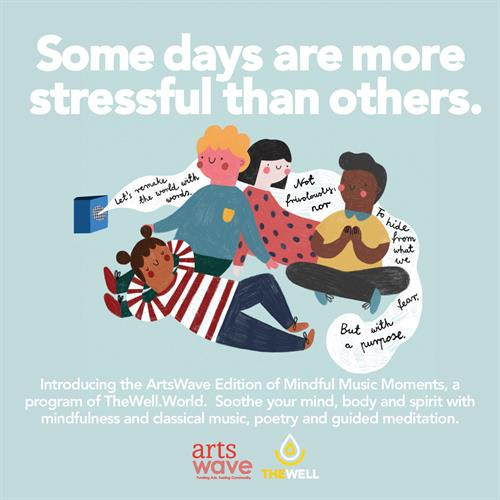Cincinnati arts community provides help in time of crisis
By Kate Kennedy
The crisis created by COVID-19 is wreaking havoc on many areas of the Cincinnati region’s economy. The hardship facing the nonprofit arts sector, with an annual economic impact of over $300 million, is unprecedented. That hardship directly impacts over 225 nonprofit organizations employing over 10,000 people and many more who work on a contractual basis. Significant numbers have been furloughed, laid off or are otherwise out of work as more than 200 events have been canceled with others pending, depending on how long closures are needed. Despite the dire situation, local arts organizations are stepping up and helping the community as much as they can during this time of need.
It starts with essential, frontline needs. The same N95 masks that medical professionals use to protect themselves and their patients are also used for painting, set building and preservation work. Those masks are in short supply, and the City of Cincinnati reached out to ArtsWave as the sector organizer and convener for help. Cincinnati Arts Association, Cincinnati Playhouse in the Park and Cincinnati Shakespeare Company located several dozen N95 masks in their venues and donated them. Cincinnati Shakespeare is also working with Hoxworth Blood Center to set up an appointments-only blood drive in their theater, which will allow donations to comply with social distancing guidelines.
In the same vein, the Cincinnati Art Museum donated their entire stock of personal protective equipment, including gloves, masks and more, to frontline medical professionals. That includes 1,700 pairs of gloves and 160 face masks, all of which went to Mercy Health hospitals. They also donated produce from their temporarily closed Terrace Café to La Soupe, an organization dedicated to preventing food waste and helping address food insecurity. ArtWorks has plans in the works to use their Hero Design Company, through which they produce capes for kids facing medical, physical or emotional hardships, to create masks to help fight the spread of COVID-19.
In Camp Washington, Wave Pool is undergoing a last-minute pivot in response to the crisis. They had just opened a small food market and teaching kitchen as part of The Welcome Project, which brought neighborhoods together with refugees and immigrants for food and art projects. Now, they’re using the new resource to deliver meals to local families with the assistance of the Freestore Foodbank. Local artists have contributed work to be delivered along with the boxed meals, and the program has impacted around 280 people in Camp Washington so far. “We didn’t want to just send a can of soup to our neighbors,” says Cal Cullen, co-founder and executive director of Wave Pool. “We wanted them to know that we care for them and that they are not alone. Art has the power to do that.”
The ongoing crisis has had ramifications for schools and the roles the arts sector plays in them. ArtsWave-funded organizations provide 410,072 experiences in schools throughout the school year, with a presence in three out of five schools throughout the region in all 15 counites, including every one of the Cincinnati Public schools. Among those experiences is essential work, like that of Melodic Connections. Melodic Connections has the largest staff of certified trauma responsive music therapists and music educators in the Cincinnati Region. They work with schools throughout Cincinnati and Northern Kentucky. Because of school closures, there’s no easy way to deliver that critical service right now, when kids have heightened stress. Every weekday, Melodic Connections staff are producing events, where kids can continue to interact with trauma-responsive certified team members.
Several arts organizations have continued to impact students while they adjust to remote learning. The Contemporary Arts Center’s education staff delivered 500 backpack arts kits to CPS students. Included in each bag were crayons, colored pencils, mini watercolors, a pencil sharpener, mini sketch book and art activity prompts from local artists Pam Kravetz and Julia Lipovsky.
Kennedy Heights Arts Center moved their student art show online so they can keep showcasing the work of talented young artists. Clifton Cultural Arts Center dropped off sidewalk chalk around Clifton so that students can create public art in their neighborhood.
Art on the Streets, with support from ArtsWave, is commissioning artists to produce four community-driven projects centered on the message to #StayHomeSaveLives. Soul Palette artist and muralist Brandon Hawkins is creating a mural design based on crowd-sourced inspiration about how people are moving creative dreams forward from home. LOOK artists Sidney Cherie Hilley and Anh Tran are creating signage, art and performances with residents of multiple neighborhoods. Lindsay Niehls is creating a coloring page for all ages, illustrating things you can do at home. Local artist and community organizer Mary Clare Rietz, partnering with Shawn Braley of Cincy Stories, is cultivating deep listening between pairs of people with differing views on staying home and physical distancing.
It’s a tough time for the region and its arts. The financial impact of the crisis is substantial: $14 million has already been lost, and the total impact is projected to be $30 million or more, according to ArtsWave data, depending on how long the crisis spans through the summer. That doesn’t take into account how long it will take for the public to be comfortable at theaters, concert halls and museums; that trust is likely to lag after the ban on public gatherings is lifted.
The greatest way that the business community can help position the arts to return strong is to support the ArtsWave Campaign. Corporate donations, sponsorships, workplace campaigns or charitable giving commitments made now are an investment in the region’s future. Donations can be made at artswave.org.
Kate Kennedy is chief operating officer of ArtsWave.








